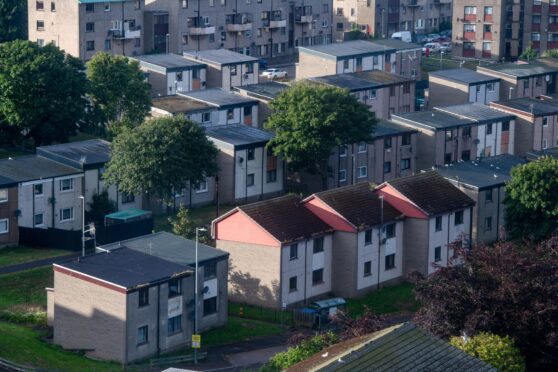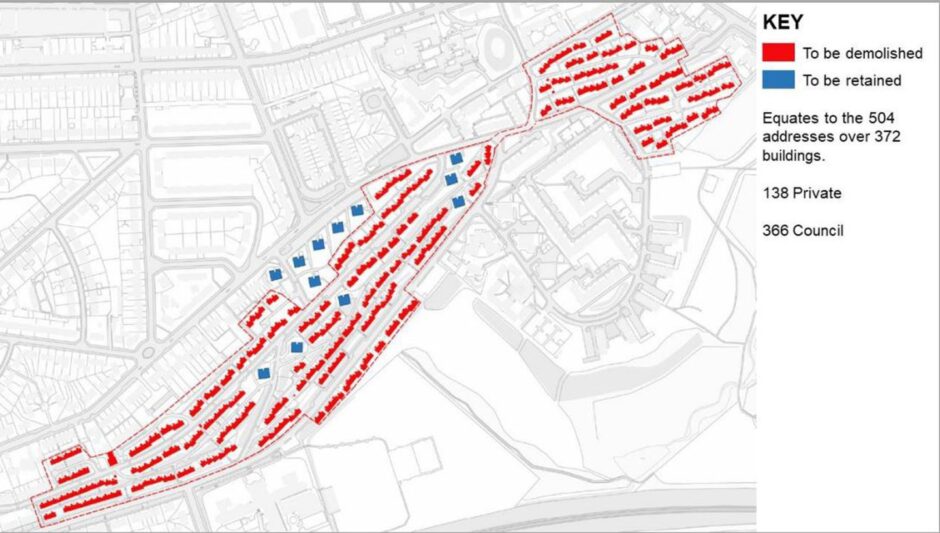A demolition plan has revealed exactly how 500 Torry homes will be bulldozed – despite an ongoing wrangle where some owners are refusing to sell.
Aberdeen City Council has officially lodged documents outlining the proposed process that will see 372 buildings in the Balnagask community razed to the ground.
It will see 504 addresses wiped out, of which 366 are council properties and the remaining 138 privately owned.
Once the site is flattened, which could be done by 2028, new social housing would be built replacing Torry’s much-loved hen houses.
Aberdeen City Council is expecting to spend more than £130 million on the entire project.
New documents spell out the way forward.
Why are the Torry Raac homes being demolished?
Councillors approved plans to knock down the Raac-affected properties in August.
A structural survey found a number of “high risk factors” which could have led to the crumbly concrete failing and falling down – putting residents at harm.
The new dossier reveals images of crumbling panels taken as more than 100 properties were inspected.
They show cracks along the full length of ceiling slabs and signs of sagging or bending.
Plus, all of the slabs had holes that increased the risk of water getting in and causing them to collapse.
Work has been ongoing to rehome council tenants to alternative accommodation in the city.
But, those who own their properties are still waiting to see what will happen with their homes. Residents are involved in a tussle with the council over valuations.
What will happen now?
Engineering consultancy firm Fairhurst has created a report that sets out exactly how the demolition works will be carried out.
The process will be carried out as “safely as possible”, they say, taking particular care to reduce any risk of nearby residents being exposed to materials including dust.
All homes found to have the reinforced autoclaved aerated concrete will be knocked down, including a mix of terraced and semi-detached two-storey houses and flats.
The properties can be found on Balnagask Road, Farquhar Road, Pentland Crescent, Pentland Place, Rockall Place, Downies Brae and Girdleness Road.
Checks will also be made to ensure asbestos is not present in the homes.
If it happens to be found, a licensed contractor will come in and remove it.
The controlled demolition will see each property safely dismantled floor by floor.
Nearby roads and pavements will be regularly cleaned to prevent dust gathering up.
The report also highlights other matters that will need to be taken into consideration such as phone lines and broadband connections, as well as gas valves and water pipes.
When were the Torry homes built?
The affected area forms part of the Balnagask Estate that was developed by Aberdeen City Council in the 1960s on the slopes of Torry Hill.
The first phase of housing there was completed in 1967, with the second following three years later.
What do you think of the plans? Let us know in our comments section below
All of the properties were originally under local authority ownership, but this soon changed.
Residents took advantage of the Right to Buy scheme from the 1980s through to 2016 which saw 138 homes purchased privately.
Read more:







Conversation